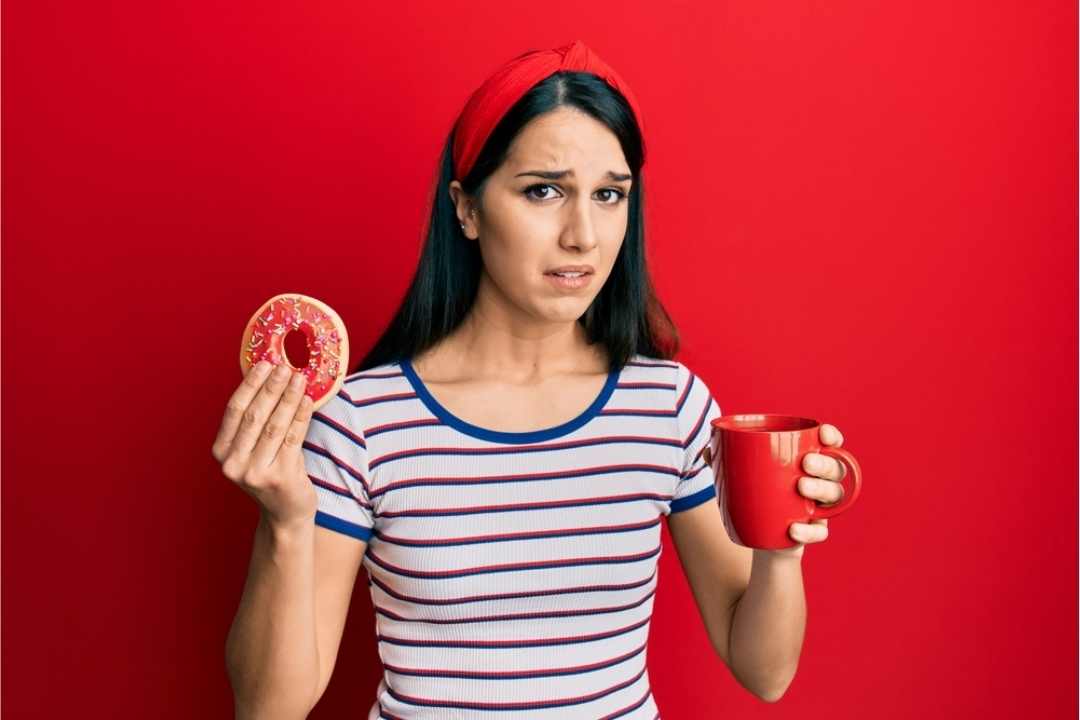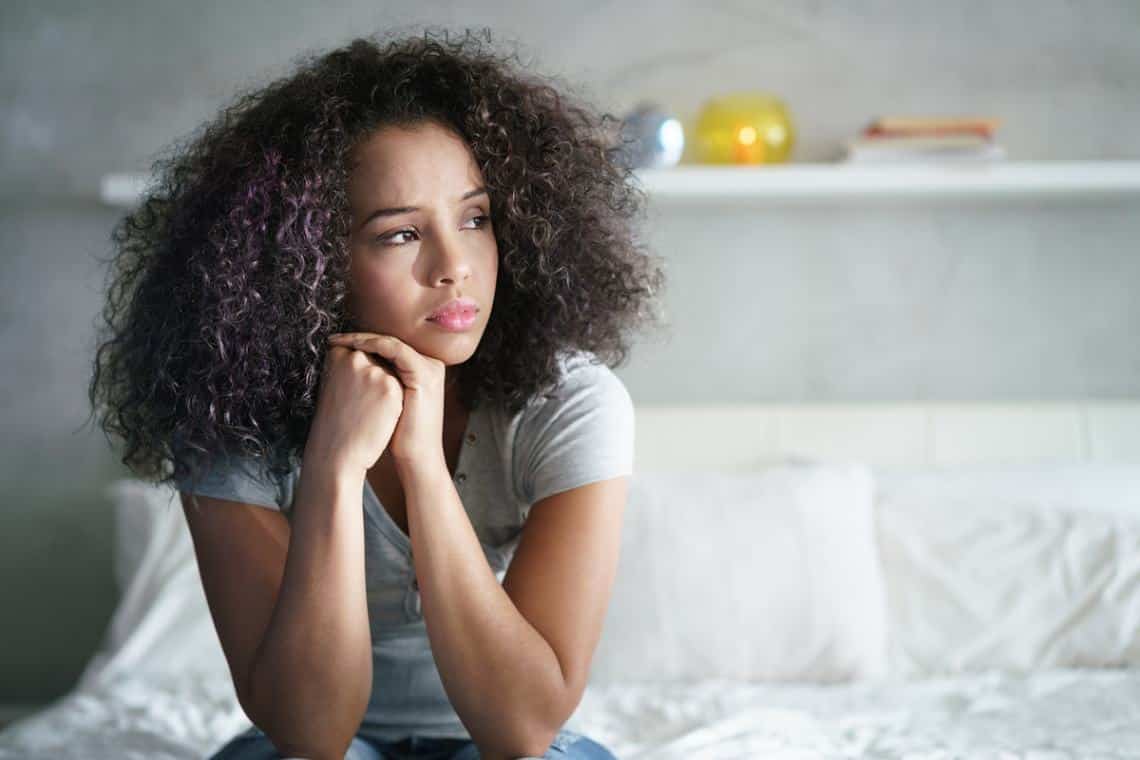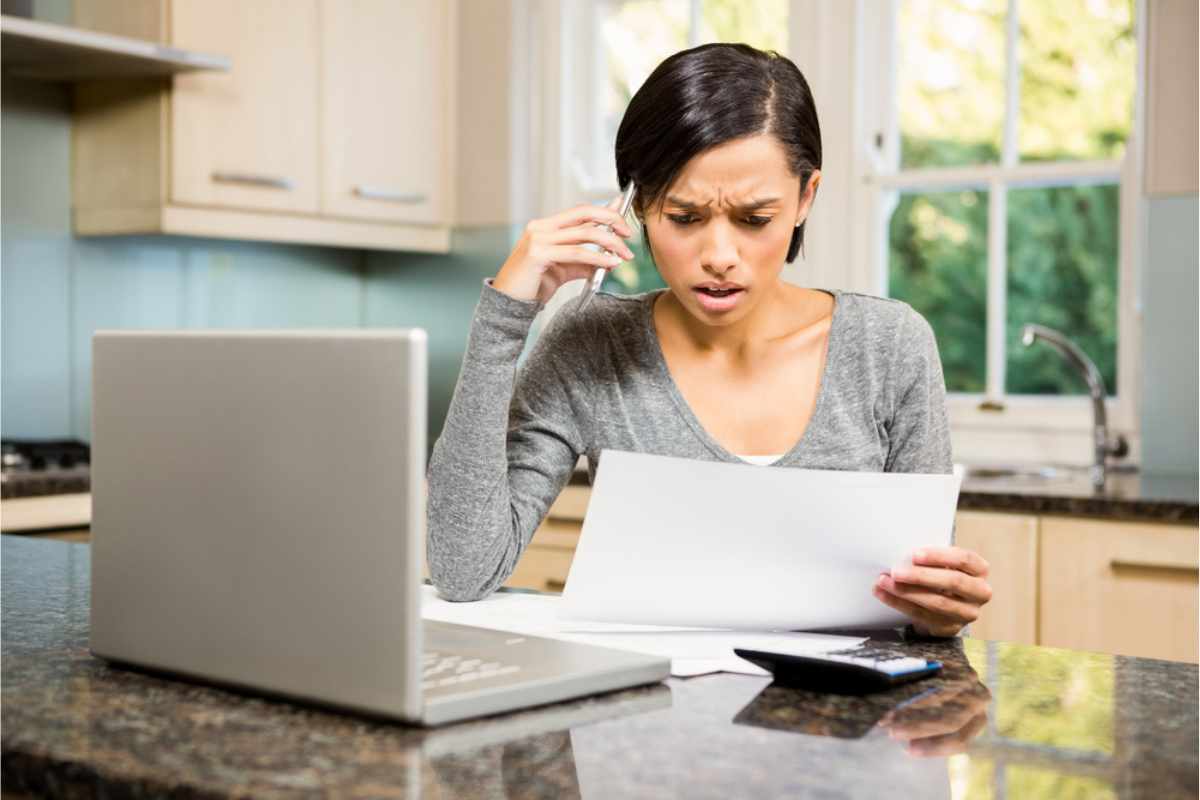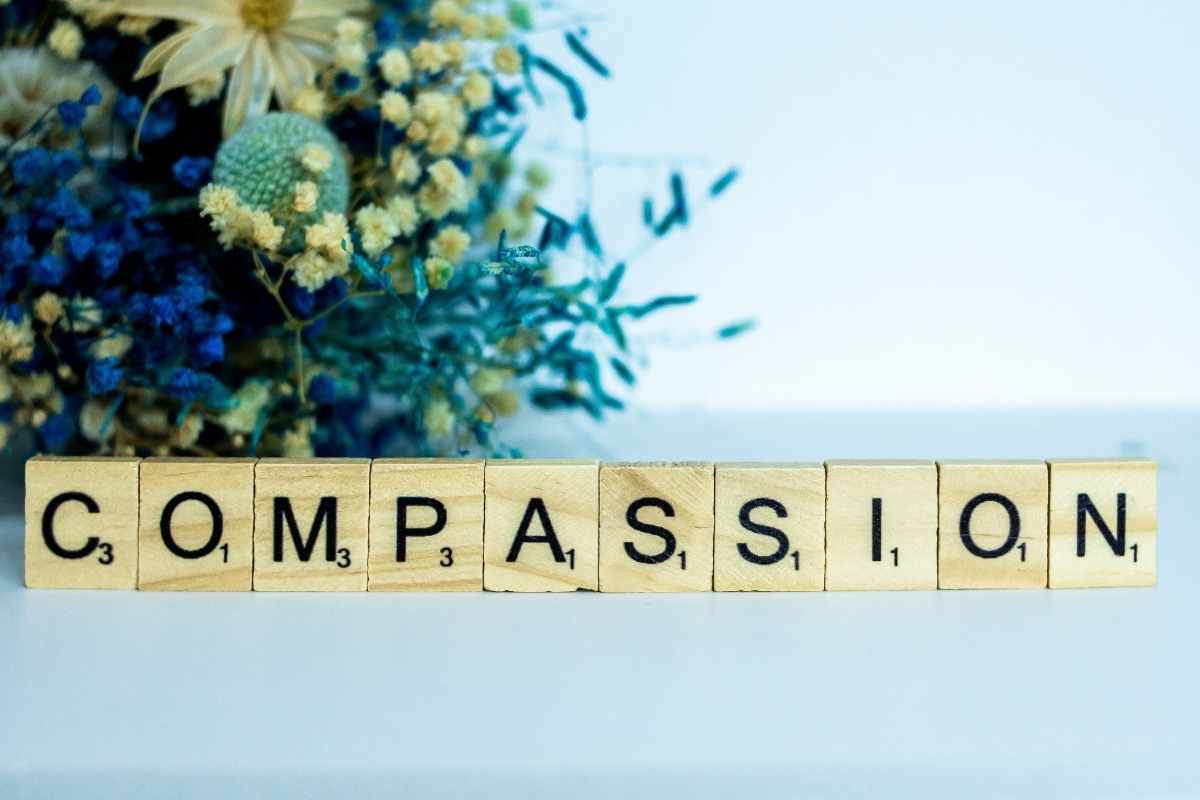June 10, 2020
Understanding Your Anxiety and Managing Your Habits
Written by Rachel Eddins
Posted in Anxiety, Tools & Exercises and with tags: coping skills, stress management, understand anxiety
 Anxiety is the most widespread mental health issues in America.
Anxiety is the most widespread mental health issues in America.
It is also one of the most treatable conditions. However, you have to recognize that you have anxiety and work actively to treat it if you want your symptoms to improve.
Do you recognize anxiety in yourself? Many people do not.
According to the Anxiety Association of America, approximately 40 million adults struggle with symptoms of anxiety. However, struggling with symptoms doesn’t necessarily mean that you’re getting the help that you need. In fact, an estimated two-thirds of adults suffering from anxiety do not receive treatment.
Why aren’t people getting quality anxiety treatment? Often, anxiety goes undiagnosed because many of anxiety’s symptoms are accepted as normal – or even beneficial – in American society. For example, anxiety can manifest as a strong desire to help others (to the detriment of oneself) or as a tendency to overwork all of the time (which society rewards but which can damage us internally).
The first step in anxiety treatment is recognizing if you have anxiety, knowing the symptoms, and becoming aware of how they manifest in your own life.
It is important to understand that some level of anxiety in life is absolutely normal and healthy. Getting the jittters from time to time, feeling a queasiness in your stomach when trying something new, or getting worried about how people perceive you when you have to perform or present something to them are all examples of “normal” anxiety. However, anxiety can easily grow into something that makes everyday tasks difficult, unmanageable, or even completely undoable.
The thing about anxiety is that the more you try to avoid your anxiety triggers, the worse it gets. Recognizing the symptoms is the start of facing the problem.
Anxiety symptoms can show up in many different ways including emotional, behavioral, cognitive, and physical symptoms. Here are a few examples of each:
- Emotional: Fear, phobias, general worry
- Behavioral: Avoidance of triggers and numbing with food, substances, overwork, etc.
- Cognitive: Racing thoughts, trouble concentrating, an inability to focus
- Physical: Grinding teeth, tense muscles, shallow breathing, racing heart
These are just a few examples of what anxiety might look like. Read more about the different types of anxiety symptoms here. It’s important to realize that anxiety often co-exists with other issues including depression, eating disorders, and PTSD. Working on managing your anxiety can help you reduce and cope with other co-occuring symptoms as well.
You can begin reducing anxiety in your life right now. It starts with managing your lifestyle, making small – but important – changes to your habits.
Here are 7 actions that you can begin taking right away to reduce anxiety symptoms:
1. Notice your reaction to caffeine.
Do you drink coffee first thing in the morning? Do you have another cup at midday and perhaps even another to get you through the afternoon energy slump? People who want to stay productive often turn to caffeine to get them through the day.
As far as vices go, caffeine doesn’t seem like a big deal. However, caffeine causes a reaction in your body that can worsen anxiety.
- Caffeine increases symptoms of physical tension in the body.
- It heightens your nervous system’s arousal which can worsen anxiety symptoms including the flushing and sweatiness associated with social anxiety.
- Even in small doses, caffeine can trigger panic attacks in some people.
Some people are genetically more sensitive to caffeine than others. Begin to pay close attention to the following things:
- How often do you consume caffeine? (You’ll find it not only in coffee but also in tea, energy drinks, chocolate, and certain supplements).
- How do you feel before and after caffeine intake?
- Throughout the day, track changes in your mood, physical body, and anxiety symptoms.
Simply beginning to notice how different habits impact us can open our eyes to the ways we cope with – and perhaps at times worsen – our anxiety.
2. It’s not just caffeine; also pay attention to sugar and sweeteners.
Similar to caffeine, sugar and even artificial sweeteners can play a huge role in making your anxiety symptoms worse. In fact, it’s wise to pay attention to how all carbohydrates impact your body and your levels of anxiety.
For example, if you haven’t eaten in a while and you have low blood sugar, you might crave sugar and simple carbs.
When you consume them, your blood sugar rises quickly, and you feel better at first. Give it a little bit of time, though, and your blood sugar quickly drops again. This causes shakiness, nausea, and other symptoms that mimic anxiety. The body may react with additional anxiety symptoms.
As with caffeine, begin taking note of how much sugar and “naked carbs” you consume and how that impacts your mood, physical body, and especially feelings of anxiety.
3. Continue your meal assessment with a look at alcohol.
Alcohol is a socially acceptable drug that many people use to reduce stress, cope with fear, and generally avoid negative feelings. Do you often have a drink to take the edge off? If you always have a glass of wine at work functions, is it in part because the setting stresses you out and you don’t want to feel so uncomfortable there?
Alcohol does temporarily make you feel more relaxed and stress-free.
However, it makes anxiety significantly worse overall. When it physically leaves your body, it actually impacts the nerves, leaving them agitated. If you have ever crashed to sleep after drinking only to wake feeling restless and unable to fall back asleep, it’s likely because of this reaction.
Begin to keep track of your alcohol consumption. How often do you drink? What do you drink? How much? Why? Most importantly, how does it make you feel – not only in the moment but especially the following day? Track your drinking and your anxiety levels and see if there’s a correlation.
Tip: Try switching to herbal teas to relax in the evening. Herbs such as chamomile, catnip, lemon balm and valerian – teas without caffeine – can help lower your anxiety levels and promote restfulness without the spike of anxiety later that night or the following day.
4. Additional tips about diet and anxiety.
Caffeine, sugar / simple carbs, and alcohol are the three key areas that you want to examine as you begin to see how your food habits affect your anxiety. However, there is a lot more to diet and anxiety.
Your brain needs certain nutrients to function properly. It also needs the right amount of water. Without these things, your brain begins to struggle. This can cause a whole host of symptoms (fatigue is probably one that you are very familiar with), including causing or worsening anxiety.
It’s important to consider eating a well-rounded diet.
Make sure that you’re getting enough water and that you know the signs of dehydration. Do not skip meals. Have healthy snacks. If your anxiety co-exists with challenges around eating, you might want to work with a therapist who specializes in eating disorders and or nutrition.
5. Pay attention to the relationship between screen time and your anxiety.
We are all constantly attending to a variety of screens for work, socializing, and entertainment. This might be the way society is going and it might not be entirely avoidable, but it’s critical to understand that this has a serious effect on the brain.
In particular, there are many screen activities that heighten our arousal levels and release dopamine into our symptoms. Some are obvious: playing high-intensity video games, for example. Others might be less obvious: every time that you check your email, your brain is searching for a “reward” (a “good” email) and when it gets it, you get a dopamine surge, which feels good but also leaves you wanting another surge as soon as possible. This makes anxiety worse.
Begin to pay attention to the following things:
- How often are you on a screen (phone, tablet, laptop, desktop)? In particular, is looking at a screen one of the first things you do when you wake up and/or one of the last things you do when you go to bed?
- Do you intentionally use screens or do you grab at them habitually?
- How does your body respond to alerts (the sound of a text message or the image of a banner notification popping up)?
- Track your screen time and your anxiety symptoms. What activities online make your anxiety worse?
There are many tricks you can implement to reduce the impact of screens on your anxiety levels. Just a few conscious changes you can make right now include:
- Begin your day with a soothing activity that is not tech-based.
- Begin your workday with no-screen or limited-screen activities for the first hour.
- Set specific times of day to check phone messages and email. Don’t check at other times.
- Ditto with social media.
- Turn off all alerts.
- Set boundaries around answering work messages during personal hours.
- Set aside times of day that are screen-free. This might include dinnertime and
- End your day with screen-free time.
6. Pay attention to the relationship between sleep and anxiety.
Trouble falling asleep or staying asleep is a major symptom of anxiety (and other mental health challenges). However, it is also an anxiety cause. Lack of sleep impacts serotonin levels in the brain, impacting moods and your ability to control your response to stimuli. Learn more about how sleep causes anxiety here.
Practicing proper sleep hygiene can help improve your anxiety significantly. The good news is that some of the things you’ve started doing above will help. Reducing caffeine, alcohol, sugar, and screen-time can all improve sleep. Here are some additional tips for improving sleep.
7. Begin to practice stress management. Learn the 2-minute vacation!
The more stress you have in your life, the worse your anxiety. The more stress you let build up, the harder it is to calm back down. It’s critical to begin practicing stress management throughout the day. We will explore stress-reduction throughout this course but you can start right now by learning the two-minute vacation technique.
It’s simple: take a two-minute break every hour and a half throughout the day, especially when working or studying. Here are some of the things that you might do during these two minutes to reduce stress and anxiety:
- Stand up and stretch your body.
- Get outside or even just take a moment to gaze out the window.
- Look at a photo of a person, place, or pet that gives you joy. Bask in your appreciation of them.
- Refill your glass of water and drink it slowly. Have a tea break.
- Close your eyes and imagine that you’re in a place that makes you feel calm.
- Listen to a favorite calming song.
- Take any small action that makes you feel stress-free for just two minutes.
Here are some additional tips for stress reduction.
What are the next steps?
These are small steps, but that doesn’t mean that they are easy. Many of the habits that worsen your anxiety are habits you initially developed as a way to combat or avoid your anxiety. For example, a drink to calm the nerves or distracting yourself with television can be a means of managing your anxiety in the moment.
The problem is that each time you avoid anxiety triggers, you worsen your overall anxiety. You begin to get more anxious more often and find yourself doing more and more to try to escape the feeling. So, taking those eight action steps above will help you get on track, but be gentle with yourself as you work on them. The feelings that arise can be uncomfortable.
Part of healing from anxiety is learning to tolerate anxiety triggers. We will explore a number of tools and techniques to help you with that throughout the rest of this course.
Engaging with an exercise each week will help you deepen your ability to reduce anxiety.
Your exercise this week is to track your lifestyle habits with an eye towards how they contribute to anxiety symptoms. Then, set one small goal to make a change in habits so you can address that issue.
5 Ways to Reduce Anxiety
Get instant access to your free ebook.
Grounding & Self Soothing
Get instant access to your free ebook.
Create Healthier Thoughts & Feelings
Get instant access to your free ebook.
Why You Feel This Way
Get instant access to your free ebook.



















